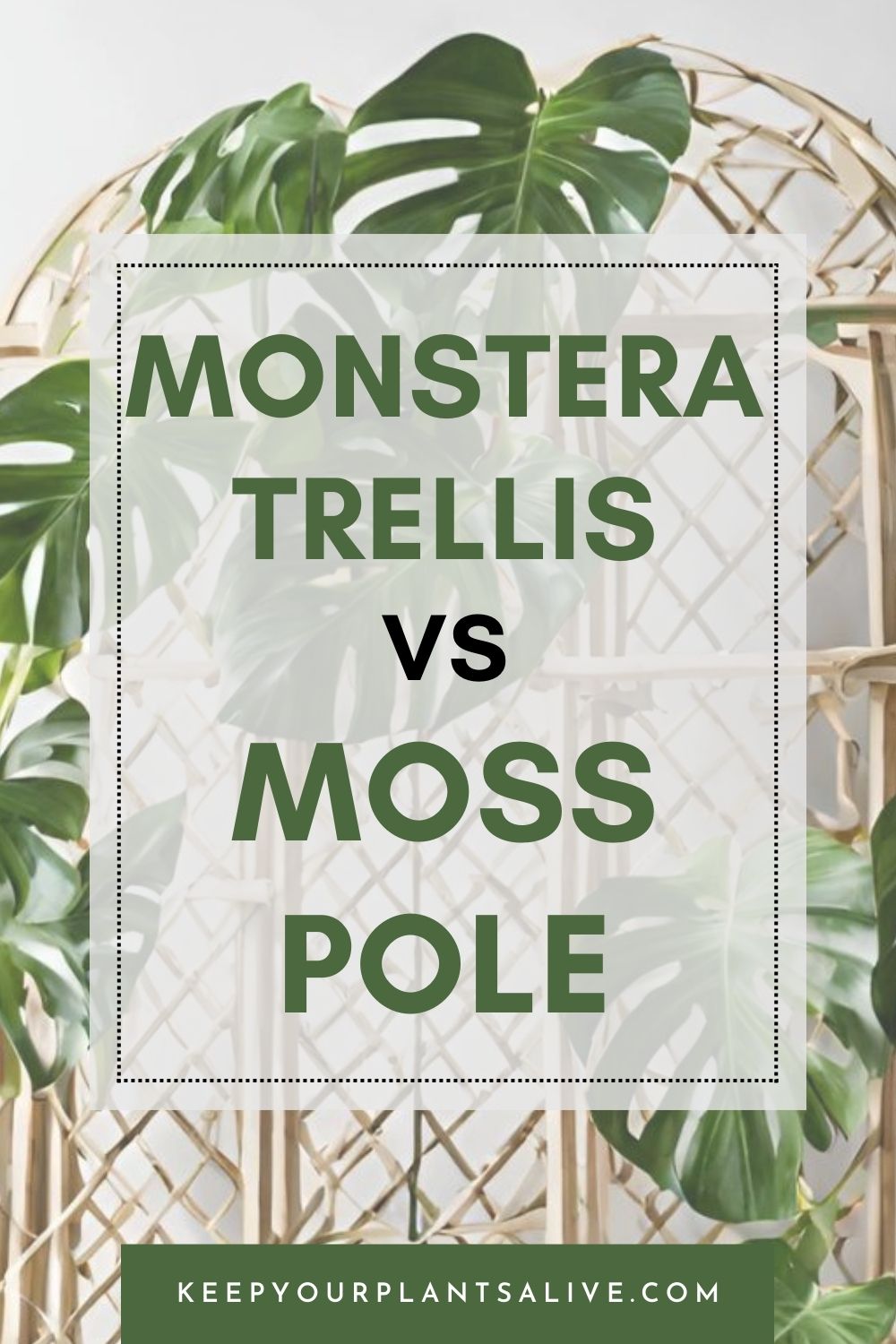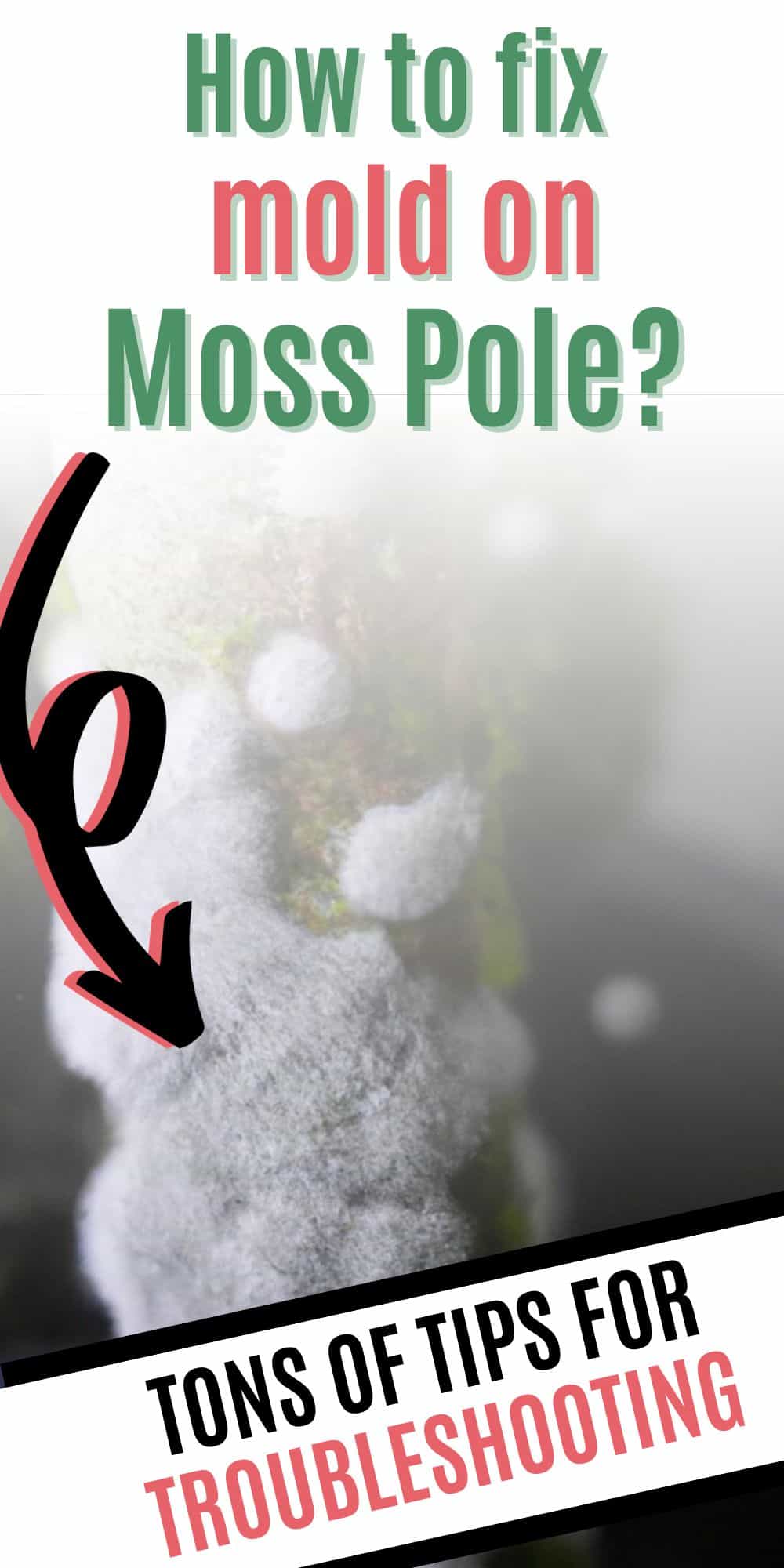Wondering how to keep a moss pole moist for your climbing plants? Our guide offers practical, easy-to-follow moss poles for plants care.
Using moss poles is a key technique to mimic the natural habitat of tropical houseplants, especially for those climbing and vining plants.
But, keeping those moss poles moist can be a bit tricky.
Don't worry, though! We've got some awesome tips and tricks to help you out.

Why a Moist Moss Pole is Essential for Your Plants
Before we dive into the details of this guide, you might be wondering whether it’s essential to keep the moss pole moist in the first place.
So here’s a quick look at what it does and why it’s essential to keep it moist.
Many houseplants, especially tropical ones like Pothos and Monstera, are epiphytes. These are plants that grow on other plants in their natural habitat to nourish themselves.
Luckily, you can recreate this effect by using moss poles, as they’ll provide a surface for the climbing plant’s aerial roots to attach themselves.
Plus, a moist moss pole keeps the moss healthy and helps your climbing plants grow better.
Tips and Techniques to Keep Moss Poles Wet
Now that you know more about moss poles and their importance for tropical plants, here are some valuable tips to help you keep them moist for longer.
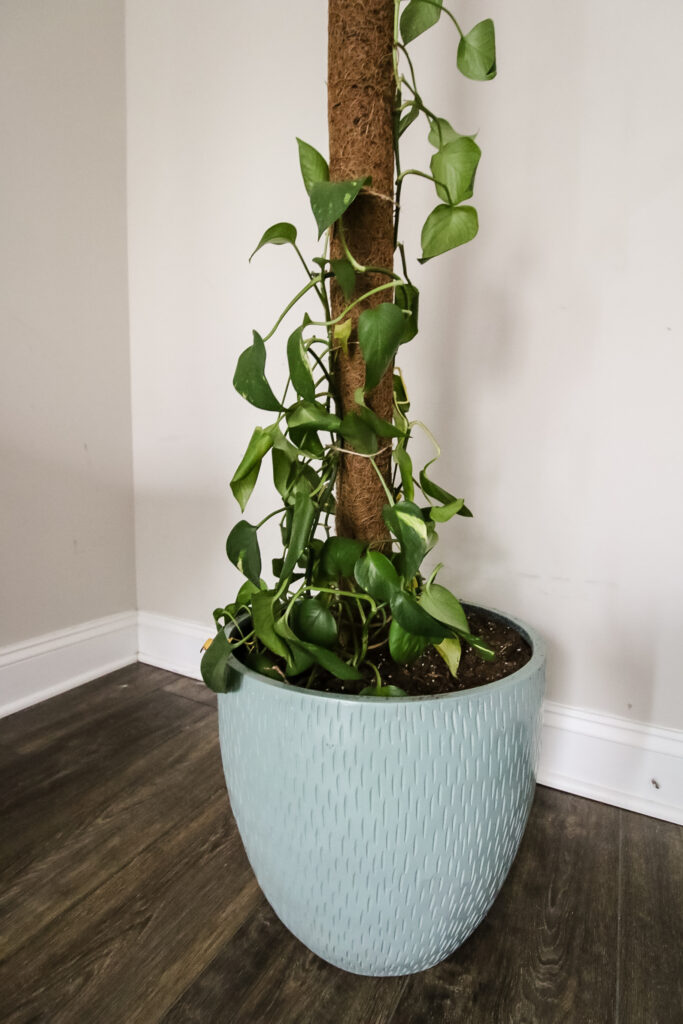
1. Pre-soaking and Regular Misting
Let’s start with the simplest technique to keep your moss poles wet, as it doesn’t require any special tools or configuration.
Moss poles are made from sphagnum moss, which is known for its excellent ability to hold large amounts of water at a time.
For that reason, the simplest way to keep the moss pole wet is by soaking it in water before placing it in the pot, and then misting it regularly to replenish its moisture content.
The frequency of misting here will depend on your indoor environmental conditions, including room temperature and humidity levels.
As a general rule, you’ll need to mist your moss pole around twice a week to keep it wet. However, you can mist it as many as four times a week if you live in a dry, hot region.
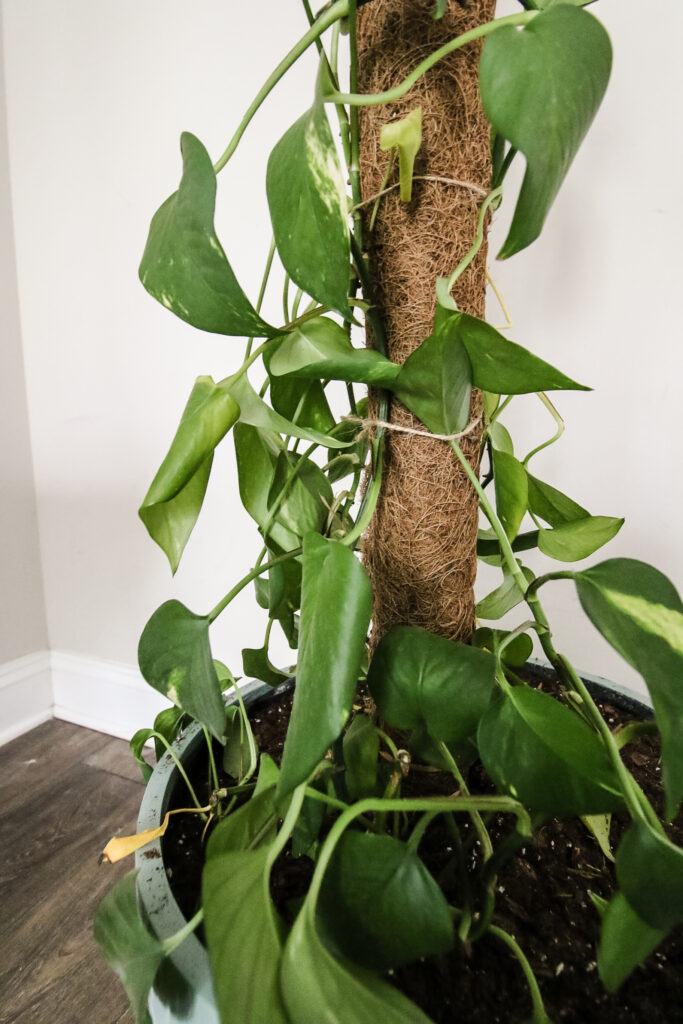
2. Install a Humidifier Near the Pole
When the relative humidity in the room is low, the dry air will absorb moisture from your moss pole fast.
This speeds up its drying time, and therefore, you’ll need to mist it more often.
On the other hand, high humidity levels slow down the transpiration process, so the moss pole holds up its moisture for longer.
This doesn’t only extend the period between moss pole misting, but it also mimics the natural habitat of your tropical plant, which keeps it happy and supports its growth.
Ideally, you need to keep the moisture between 60% and 70% to avoid mold build-up. You can easily track the humidity in the room using a reliable hygrometer.
3. Slow Drip Method
If you want to create an automatic watering system to keep the moss pole moist without misting it every couple of days, this method will have you covered.
The technique here is quite simple, as you’ll only need a 1 to 2-liter plastic bottle, but make sure it’s clean.
After that, you’ll need to poke a few holes at the plastic cap to allow the water to drip from the water bottle at a steady and slow pace (around 3 holes should be good enough.)
Meanwhile, make an indentation on the top of the moss pole to secure the bottle.
Once everything is ready, you’ll need to turn the bottle upside down and attach it to the top of the pole, and you’ll have yourself a self-watering system that you need to refill every couple of weeks.
4. Create a Moss Pole with a Wicking System
Another technique to make your moss pole self-watering is using a wicking system.
This one looks similar to a regular moss pole, but at the bottom, there’s a wicking rope wrapped around the pole.
Here’s how to create one:
- Start by soaking the moss and setting it aside.
- Place a PVC pipe into the soil and insert enough macrame cord to reach the pipe’s bottom.
- Tie a knot near the top of the pipe and wrap the cord along the pipe, then secure it with zip ties, then do the same at the bottom.
- Cover the pipe with a thick layer of soaked moss, and use extra cords, zip ties, or wire mesh to secure it.
- Place the pole in the soil, and pour water into the pipe until it becomes full.
- Let the wicking system supply the moss with moisture continuously as it dries up, and replenish the water in the pipe when it’s drained.
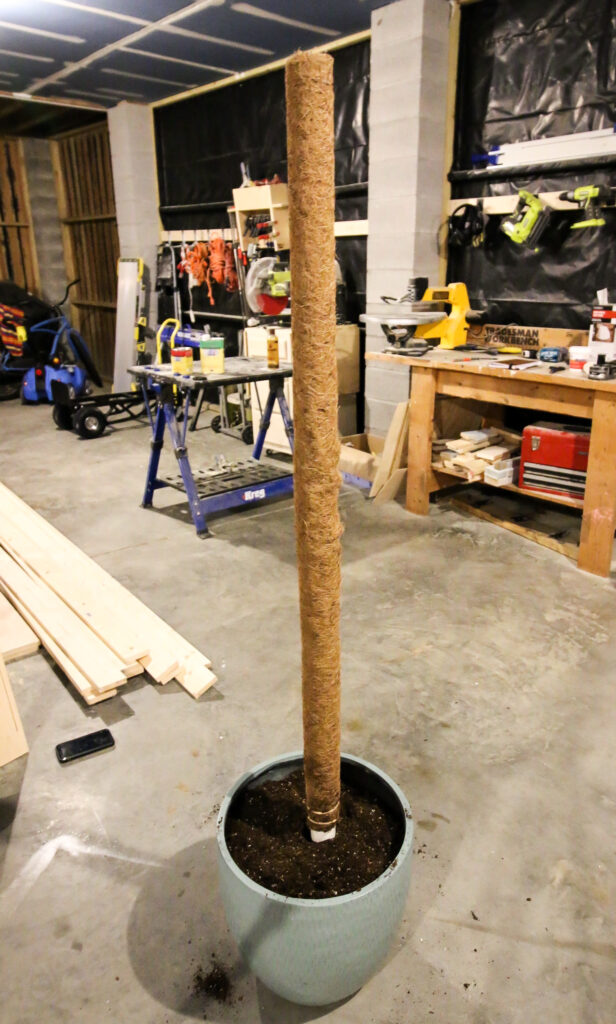
5. Using Smaller Pots
Another quick method to keep the moss pole moist for longer is using a pot that isn’t much larger in diameter than the pole itself.
This way, there’s little room for moisture to seep into the soil, so it remains on the pole.
Of course, this technique is only suitable if your plant doesn’t grow a large root network.
6. Reduce Exposure to Sunlight and Wind Drafts
Lastly, the place where you set up your plant can greatly affect its conditions.
For example, if you want to keep the moss pole moist for longer, you simply need to keep it away from sunlight and wind.
These two elements speed up the evaporation process, causing the pole to dry up much quicker, compared to the same pole in a spot with plenty of shade and away from wind drafts.
Before you go...
This marks the end of today's guide that shows you how to keep moss poles moist. As you can see, there are plenty of methods to get the job done, and you can combine some of them to keep the poles moist for longer.
Check out this handy startup guide if you're interested in finding out more about plant care and proper techniques to keep your houseplant happy.
Thanks for reading!


Hey there, I'm Morgan, a houseplant enthusiast from sunny Charleston, South Carolina. Growing up surrounded by my mom's lush orchids and African violets, I discovered the magic of bringing nature indoors. Thanks to the pandemic, I delved deeper into houseplants, discovering their power to uplift moods and transform spaces. I'm here to spill all my secrets, helping you pick the perfect houseplant - and make it happy. Let's keep your plants alive, together! 😊

